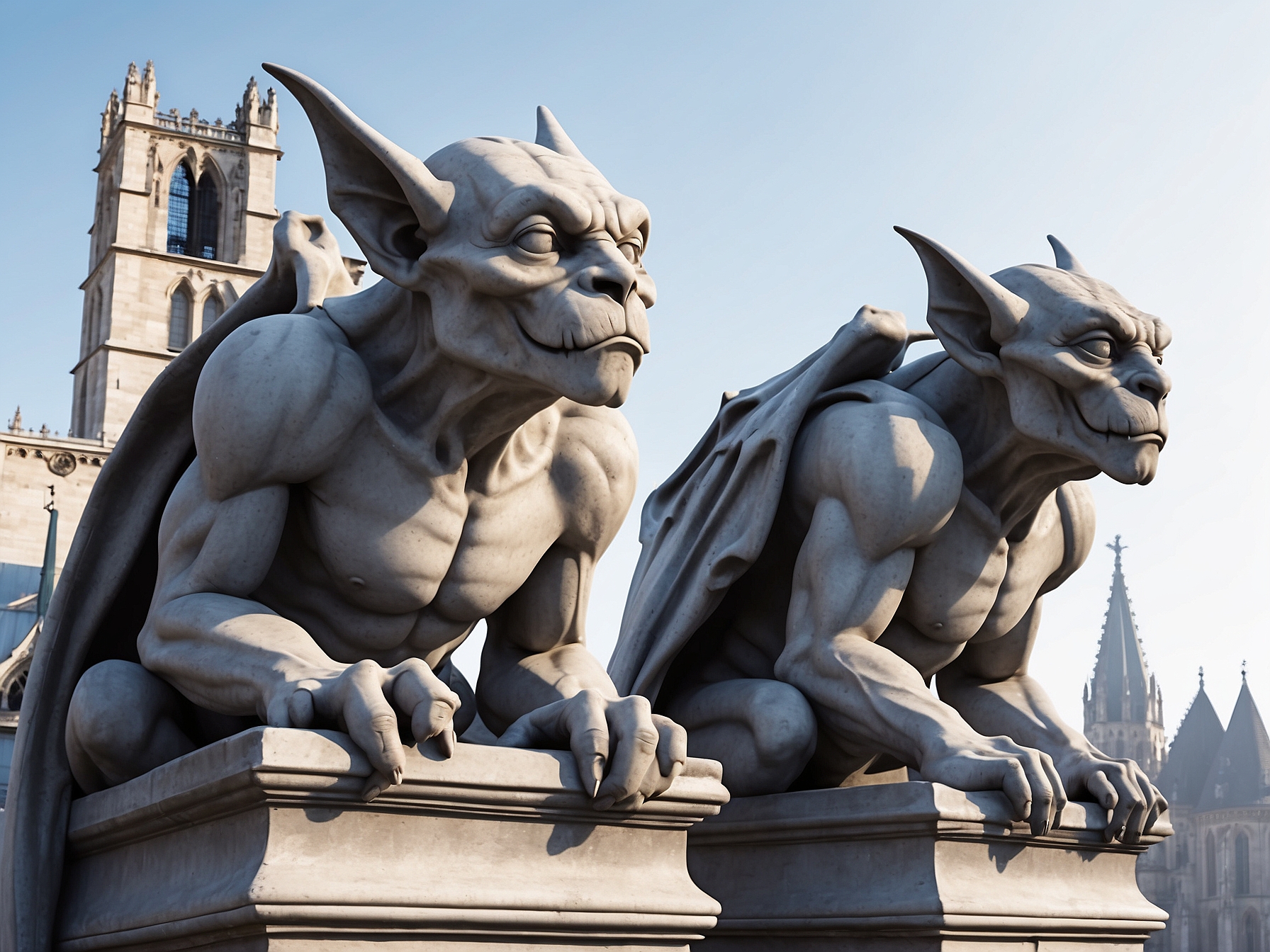Gargoyles, those curious and often grotesque stone figures adorning the facades of medieval cathedrals and buildings, have captured the imagination of people for centuries. Though commonly associated with decorative elements, gargoyles served a practical purpose beyond mere ornamentation in medieval architecture. Let’s delve into the origins and significance of these iconic guardians of the past.
Aesthetic Marvels with a Purpose
Gargoyles, with their intricate designs and sometimes eerie appearances, were not simply products of artistic whimsy. In medieval times, they were essential components of architectural drainage systems, designed to divert rainwater away from the building’s walls and foundations. These functional sculptures, typically positioned at the ends of gutters or spouts, prevented rainwater from eroding the masonry and causing structural damage.
Warding off Evil: The Symbolism of Gargoyles
Beyond their practical role in directing water flow, gargoyles carried symbolic significance deeply rooted in medieval beliefs and folklore. The prevailing worldview during the Middle Ages was one imbued with religious fervor and a heightened awareness of the spiritual realm. Gargoyles, often depicting mythical creatures, demons, or animals, were believed to possess protective qualities.
In Christian iconography, gargoyles were interpreted as guardians of sacred spaces, warding off evil spirits and serving as reminders of the eternal struggle between good and evil. Their presence on churches and cathedrals was seen as a form of spiritual protection, reinforcing the sanctity of the holy sites they adorned.
Expressions of Artistic Ingenuity
While fulfilling their practical and symbolic functions, gargoyles also provided medieval craftsmen with a canvas for artistic expression. Skilled stone carvers showcased their mastery by sculpting intricate details and imbuing these figures with personality and character. Gargoyles offered a means of infusing mundane architectural elements with a touch of creativity and whimsy, adding visual interest to otherwise austere structures.
Evolution and Legacy
Over time, the function of gargoyles evolved alongside changes in architectural styles and building techniques. As advancements in drainage systems rendered their practical utility obsolete, gargoyles gradually transitioned into purely decorative elements. However, their symbolic significance endured, and they continued to be incorporated into architectural designs as iconic symbols of medieval craftsmanship and religious devotion.
Today, gargoyles continue to captivate the imagination of people worldwide. Beyond their historical and architectural significance, they have become cultural icons, featured in literature, art, and popular media as enduring symbols of the medieval era’s mystique and grandeur.
Conclusion
Gargoyles, with their dual roles as functional drainage elements and symbolic guardians, epitomize the fusion of practicality and symbolism in medieval architecture. While originally serving a utilitarian purpose, these remarkable stone figures transcended their mundane function to become enduring symbols of artistic creativity, religious devotion, and the eternal struggle between good and evil. As guardians of medieval buildings and repositories of historical and cultural significance, gargoyles continue to fascinate and inspire admiration centuries after their creation.
By the way… if you’re searching for a historic property in Eastern Pennsylvania, New Jersey or Delaware, let our team at CENTURY 21 Keim help. Call us at 610-969-7200, email us at c21keim@gmail.com or visit us online at www.Century21Keim.com


 Facebook
Facebook
 X
X
 Pinterest
Pinterest
 Copy Link
Copy Link






